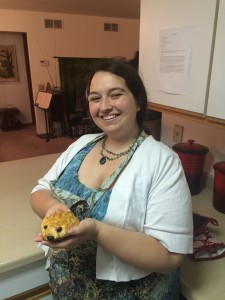Last year’s winter was unusually harsh, and killed off large numbers of rosebushes. Since the fall planting season is coming up soon, here is an overview of how to select a hardy rosebush and how to protect them from inclement weather.
- Hardiness Zone: The first thing to do
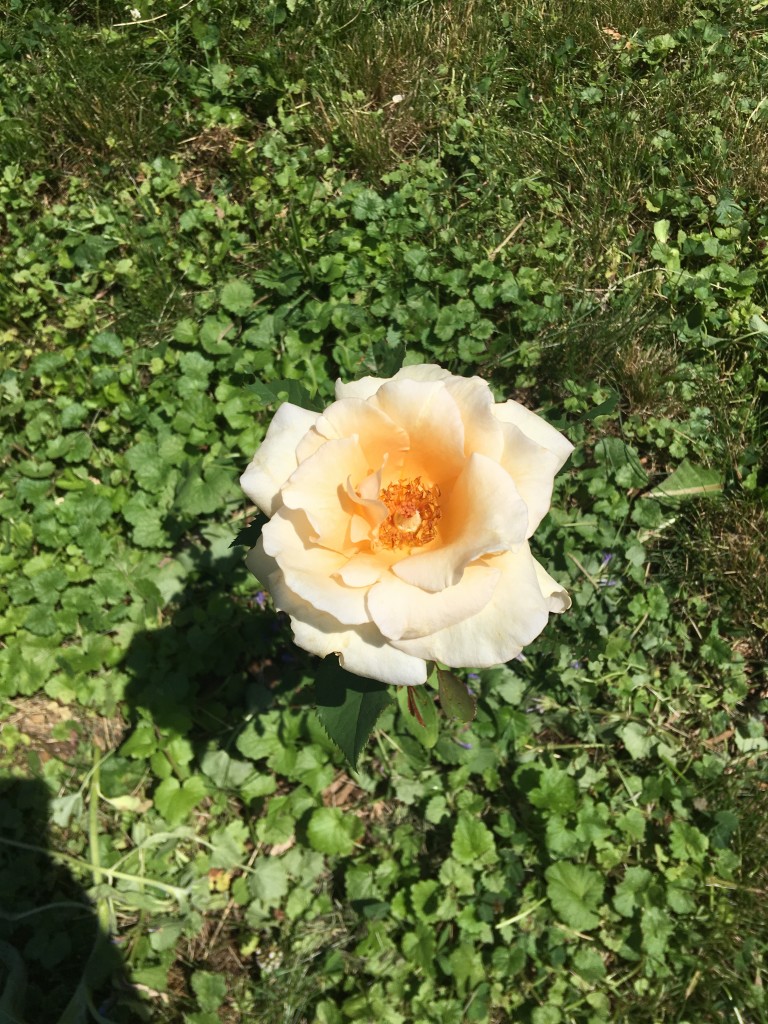 when choosing any garden plant is to identify your hardiness zone. Many maps for this can be found in gardening books and online. For best results, look for plants that are hardy at least one full zone below and one zone above your zone. At the very least, never select a plant that is not hardy to your area! To get accurate plant hardiness zones, I usually look to the Dave’s Garden and Missouri Botanical Garden websites for maximum ranges, as well as my Sunset National Garden Book for microclimate information. These are often better sources than garden center tags and availability, which sometimes stretch the plant’s hardiness out of its comfort zone.
when choosing any garden plant is to identify your hardiness zone. Many maps for this can be found in gardening books and online. For best results, look for plants that are hardy at least one full zone below and one zone above your zone. At the very least, never select a plant that is not hardy to your area! To get accurate plant hardiness zones, I usually look to the Dave’s Garden and Missouri Botanical Garden websites for maximum ranges, as well as my Sunset National Garden Book for microclimate information. These are often better sources than garden center tags and availability, which sometimes stretch the plant’s hardiness out of its comfort zone. - Rose Types: Some roses are naturally hardier than others. While it is always a good idea to check the hardiness zone of any species or cultivar you are thinking about planting, there are a few rules of thumb when choosing a rose type that will survive bitterly cold winters.
- First, species roses, especially Rosa
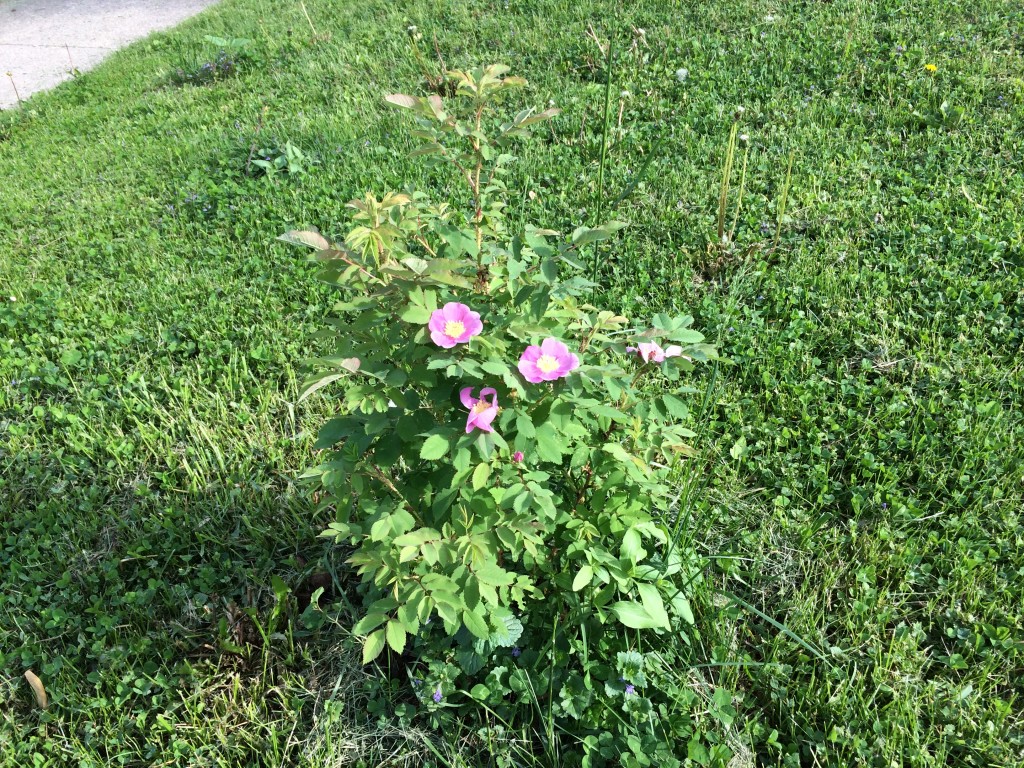 rugosas and Rosa acicularis, are typically hardier than their hybrid counterparts, even when both have the similar hardiness zones. In addition, species roses are more resistant to insects and animals (partially because they tend to be covered in many more thorns), as well as disease due to their greater genetic diversity. They also need less care and maintenance, as they are used to taking care of themselves! The most cold-hardy species I’ve encountered is a spring bloomer named Rosa acicularis, the arctic rose (or prickly rose, because it is completely covered in thorns), which is hardy down to -50°F and can also tolerate a bit of shade. New growth can wilt a bit on hot summer days (when the rose isn’t blooming anyway), but not enough to damage the plant.
rugosas and Rosa acicularis, are typically hardier than their hybrid counterparts, even when both have the similar hardiness zones. In addition, species roses are more resistant to insects and animals (partially because they tend to be covered in many more thorns), as well as disease due to their greater genetic diversity. They also need less care and maintenance, as they are used to taking care of themselves! The most cold-hardy species I’ve encountered is a spring bloomer named Rosa acicularis, the arctic rose (or prickly rose, because it is completely covered in thorns), which is hardy down to -50°F and can also tolerate a bit of shade. New growth can wilt a bit on hot summer days (when the rose isn’t blooming anyway), but not enough to damage the plant. - Second, historical varieties are hardier
 than modern varieties. This is because many old varieties, such as damasks and gallicas, are single-bloomers, which allows them to put more resources into growing leaves and roots after a single showy bloom, which allows them to better survive a harsh winter. Modern varieties, such as hybrid teas and grandifloras, tend to be everblooming, which means they expend more resources on flowers and less on roots and leaves, which leaves them less prepared for a deep freeze. A great historical variety I grow is the “Charles de Mills” gallica rose, which is hardy down to -30°F and suffered very little damage during a winter that included two straight weeks of -10°F temperatures without snow-cover and minimal protection, followed by a bizarre 60°F heat wave in February, followed by blizzards in April. When the rain hits this rose, your whole yard will smell like rosewater.
than modern varieties. This is because many old varieties, such as damasks and gallicas, are single-bloomers, which allows them to put more resources into growing leaves and roots after a single showy bloom, which allows them to better survive a harsh winter. Modern varieties, such as hybrid teas and grandifloras, tend to be everblooming, which means they expend more resources on flowers and less on roots and leaves, which leaves them less prepared for a deep freeze. A great historical variety I grow is the “Charles de Mills” gallica rose, which is hardy down to -30°F and suffered very little damage during a winter that included two straight weeks of -10°F temperatures without snow-cover and minimal protection, followed by a bizarre 60°F heat wave in February, followed by blizzards in April. When the rain hits this rose, your whole yard will smell like rosewater.
- First, species roses, especially Rosa
- Selecting a Supplier: Even if you select a
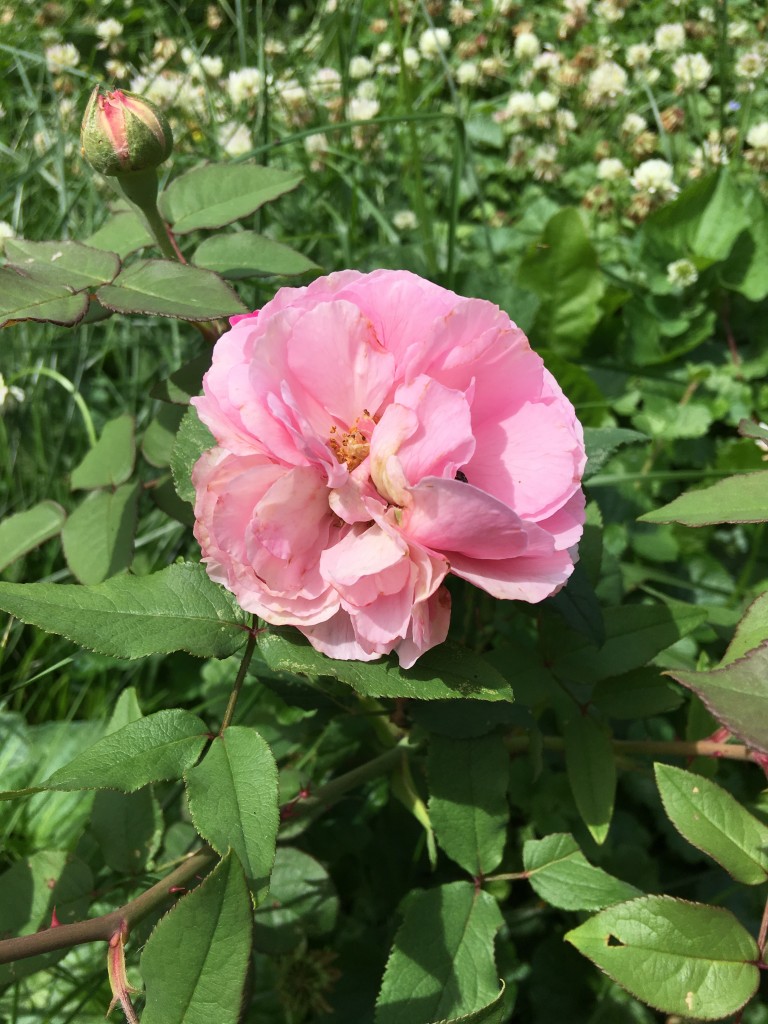 rose that is well-adapted to your hardiness zone on paper, you must also consider the location and climate of your supplier. If you are not picking up your rose directly from a local garden center, greenhouse, or flower farm, make sure that you supplier is located in an area with either similar or more extreme growing conditions than your own. The reason for this is that, due to genetic diversity, plants grown in milder climates are less likely to develop or preserve adaptations for inclement weather. Even among plants of the same species or cultivar, plants bought from a warm climate will suffer much greater winter damage than those from a cold climate. I found this out the hard way when I bought roses from two different suppliers last year, six from Colorado and six from Oregon. Of the six I purchased from Oregon, all except one (a species rose) died down to the ground. All five of these sprouted showed new growth in the spring, but one (a modern “Bonica” everbloomer) died by midsummer. The surviving damaged roses did not display the same quality of growth as the Colorado roses, and one (a “Madame Hardy” Damask supposedly hardy down to -30°F) developed a spontaneous mutation in its flower that may have been brought about by winter damage. Of the six plants I purchased from Colorado, all are thriving beautifully and none of them are displaying any abnormality. Because of these results, supplier location must be taken very seriously.
rose that is well-adapted to your hardiness zone on paper, you must also consider the location and climate of your supplier. If you are not picking up your rose directly from a local garden center, greenhouse, or flower farm, make sure that you supplier is located in an area with either similar or more extreme growing conditions than your own. The reason for this is that, due to genetic diversity, plants grown in milder climates are less likely to develop or preserve adaptations for inclement weather. Even among plants of the same species or cultivar, plants bought from a warm climate will suffer much greater winter damage than those from a cold climate. I found this out the hard way when I bought roses from two different suppliers last year, six from Colorado and six from Oregon. Of the six I purchased from Oregon, all except one (a species rose) died down to the ground. All five of these sprouted showed new growth in the spring, but one (a modern “Bonica” everbloomer) died by midsummer. The surviving damaged roses did not display the same quality of growth as the Colorado roses, and one (a “Madame Hardy” Damask supposedly hardy down to -30°F) developed a spontaneous mutation in its flower that may have been brought about by winter damage. Of the six plants I purchased from Colorado, all are thriving beautifully and none of them are displaying any abnormality. Because of these results, supplier location must be taken very seriously. - Planting and the First Year: Roses may
 be planted either in fall or spring. I usually plant mine towards the end of May, when there is no danger of frost damage and plenty of time for it to become established before the next winter. When planting your rosebush, be sure to tease apart the roots with your hand so that it does not strangle itself in the ground. The hole should be half-again as wide as the rose, and the edges should be softened with a spade or pitchfork so that the roots will be better able to penetrate the soil. Water daily to encourage new growth. Avoid fertilizing the first year after planting, as it may harm unestablished plants. New plants should always be given winter protection during their first winter.
be planted either in fall or spring. I usually plant mine towards the end of May, when there is no danger of frost damage and plenty of time for it to become established before the next winter. When planting your rosebush, be sure to tease apart the roots with your hand so that it does not strangle itself in the ground. The hole should be half-again as wide as the rose, and the edges should be softened with a spade or pitchfork so that the roots will be better able to penetrate the soil. Water daily to encourage new growth. Avoid fertilizing the first year after planting, as it may harm unestablished plants. New plants should always be given winter protection during their first winter. - Winter Care: Winter care is especially
 important during the first year, when the plant is still getting established. For the most conservative winter care, wait until the rosebush has lost all its leaves and entered dormancy before covering with a rose cone filled with leaves. Keep rose cone over rosebush constantly until spring, then begin removing cone on days above freezing and replacing at night or on cold days. Rose cone can be done away with entirely when temperature is consistently above freezing. For less conservative protection, rake leaf piles over your rosebushes to protect the root system, which is the part of the plant most necessary for survival.
important during the first year, when the plant is still getting established. For the most conservative winter care, wait until the rosebush has lost all its leaves and entered dormancy before covering with a rose cone filled with leaves. Keep rose cone over rosebush constantly until spring, then begin removing cone on days above freezing and replacing at night or on cold days. Rose cone can be done away with entirely when temperature is consistently above freezing. For less conservative protection, rake leaf piles over your rosebushes to protect the root system, which is the part of the plant most necessary for survival. - Fertilization: After the first year, you
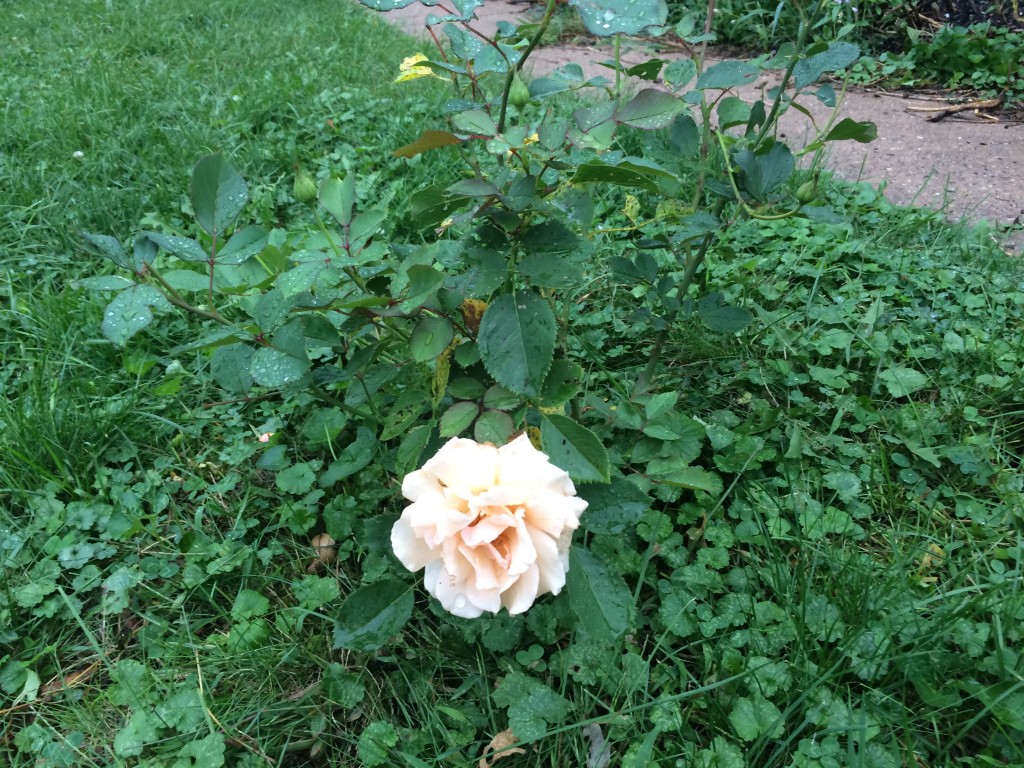 may begin fertilizing roses to encourage growth and flowering. During the second year I use 1 tbsp. granular rose fertilizer per bush per month, as my roses are still small, but this amount may increase in subsequent years as the roses grow. Species roses typically require less fertilizer than cultivars, as they are used to growing independently. If grown under good conditions, hardy cultivars do not require fertilizer either, but using it may help them recover from insect or animal damage and improve appearance.
may begin fertilizing roses to encourage growth and flowering. During the second year I use 1 tbsp. granular rose fertilizer per bush per month, as my roses are still small, but this amount may increase in subsequent years as the roses grow. Species roses typically require less fertilizer than cultivars, as they are used to growing independently. If grown under good conditions, hardy cultivars do not require fertilizer either, but using it may help them recover from insect or animal damage and improve appearance. - Continued Care: If you select hardy
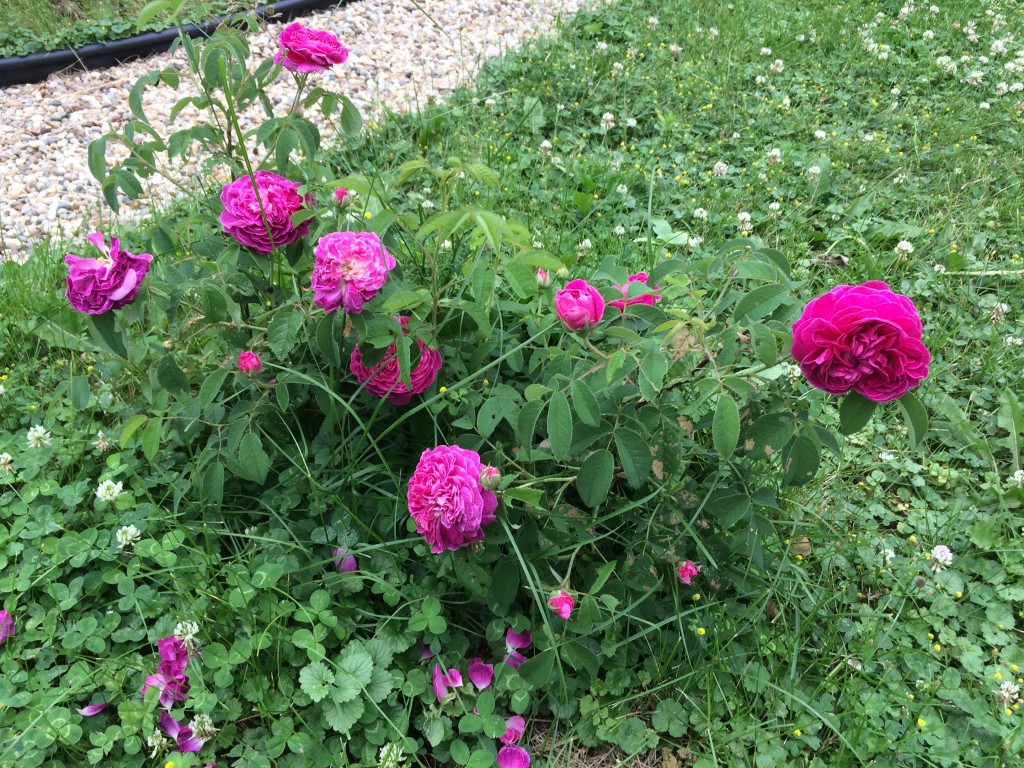 roses and care for them properly in the first year, they will need less care in following years. If your rosebush overwinters without damage, you may decrease the amount of winter protection needed in subsequent years. As roses become established, they will also need less water. While established roses may benefit from water if they are flowering during a heat wave or a bit of fertilizer, this is not necessary for their survival. In fact, an established, hardy rosebush can be neglected year-round and still produce a fantastic display of flowers
roses and care for them properly in the first year, they will need less care in following years. If your rosebush overwinters without damage, you may decrease the amount of winter protection needed in subsequent years. As roses become established, they will also need less water. While established roses may benefit from water if they are flowering during a heat wave or a bit of fertilizer, this is not necessary for their survival. In fact, an established, hardy rosebush can be neglected year-round and still produce a fantastic display of flowers
Happy Gardening!
Posted August 28th, 2018 by Admin
